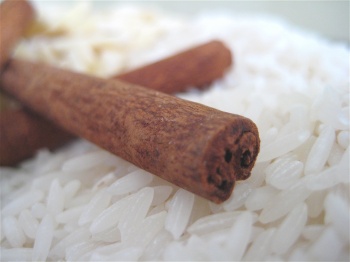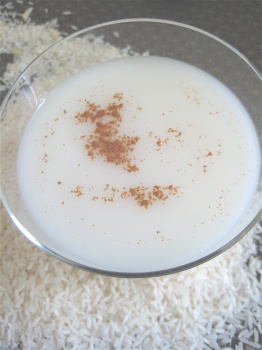 When you hear the word "horchata," what comes to mind? I'm sure the answers will vary. The most literal-minded of you will think "rice milk," some of you may simply associate it with the concept of the "taqueria," while others might draw a complete blank. I for one can't get the image of the mouthy whores of the Mission district out of my head. Not that I associate them with actual drink, it's just the phonics of the word that lead me there.
When you hear the word "horchata," what comes to mind? I'm sure the answers will vary. The most literal-minded of you will think "rice milk," some of you may simply associate it with the concept of the "taqueria," while others might draw a complete blank. I for one can't get the image of the mouthy whores of the Mission district out of my head. Not that I associate them with actual drink, it's just the phonics of the word that lead me there.
The word horchata is derived from the Valencian word orxata, which itself is derived from ordiata (from the Latin word for barley, hordeata). A popular, though quite unsubstantiated, myth tells the story of a young Moorish girl who gave King James I of Aragon a beverage of ground chufa (tigernut or earth almond) and upon drinking, the king exclaimed, "Això és or, xata!" (This is gold, girl!).
So there you have it. Believe it or not.
The origins of the beverage are as cloudy as the drink itself. The Egyptians had a similar drink made of barley water mixed with honey. The Arabs brought a form of it up to the Iberian peninsula in their unconquerable days, and the Spanish have loved it so much for so long that they ended up pouring it all over the New World.
In Mexico, the beverage is made of rice, water, cinnamon, and sugar. In Spain, the chufa is the preferred source of starch. El Salvador has its own version, too. Pretty much everybody has their own version which they deem to be correct, but the essentials remain the same: a source of starch, water, and some form of sweetener. Cinnamon is commonly used (and personally, I feel that horchata without cinnamon is just plain rice milk). Lime or lemon zest are also frequent guests in the mix. It is entirely up the the preferences of the individual making it.
